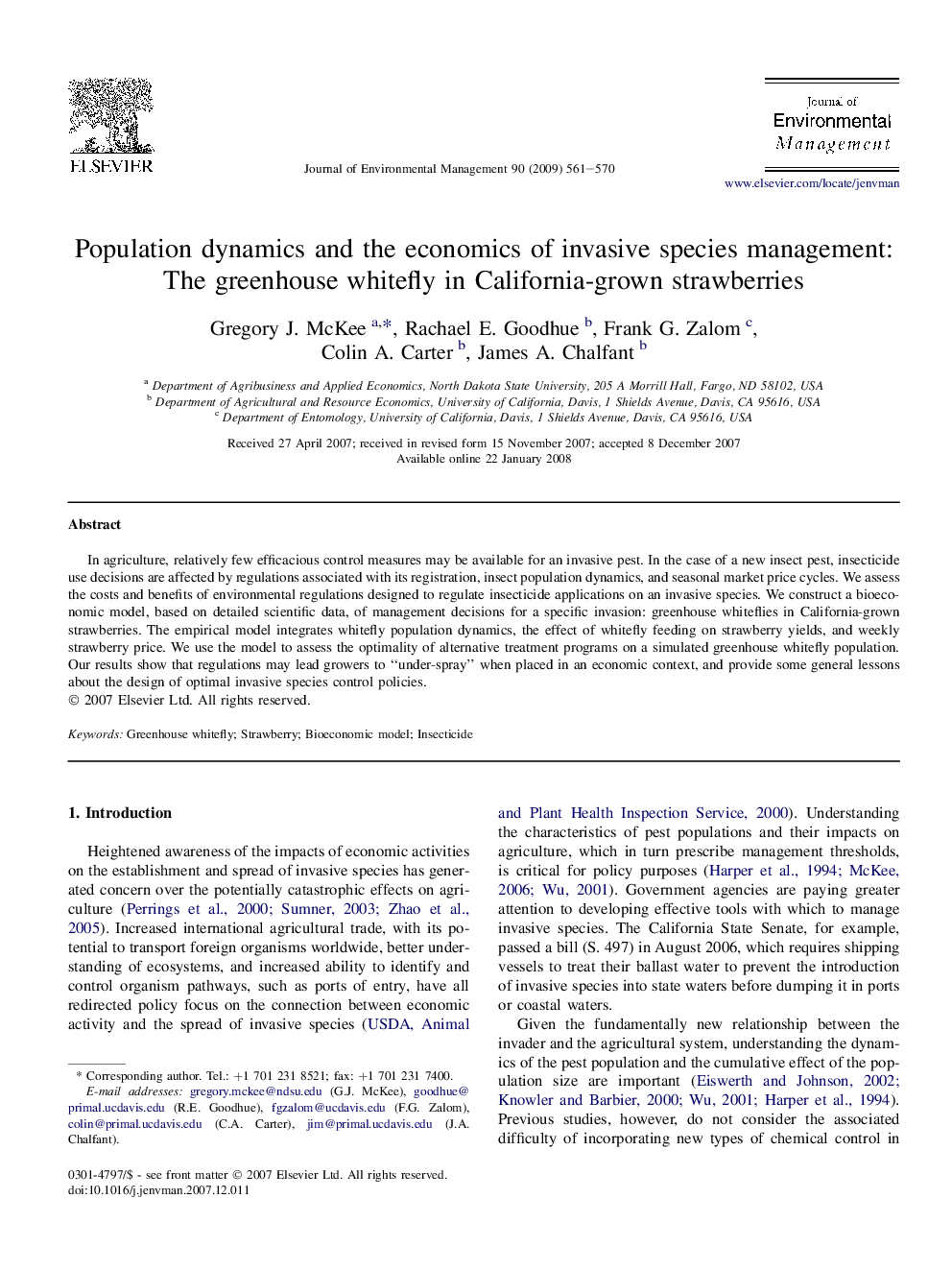| Article ID | Journal | Published Year | Pages | File Type |
|---|---|---|---|---|
| 1058124 | Journal of Environmental Management | 2009 | 10 Pages |
In agriculture, relatively few efficacious control measures may be available for an invasive pest. In the case of a new insect pest, insecticide use decisions are affected by regulations associated with its registration, insect population dynamics, and seasonal market price cycles. We assess the costs and benefits of environmental regulations designed to regulate insecticide applications on an invasive species. We construct a bioeconomic model, based on detailed scientific data, of management decisions for a specific invasion: greenhouse whiteflies in California-grown strawberries. The empirical model integrates whitefly population dynamics, the effect of whitefly feeding on strawberry yields, and weekly strawberry price. We use the model to assess the optimality of alternative treatment programs on a simulated greenhouse whitefly population. Our results show that regulations may lead growers to “under-spray” when placed in an economic context, and provide some general lessons about the design of optimal invasive species control policies.
